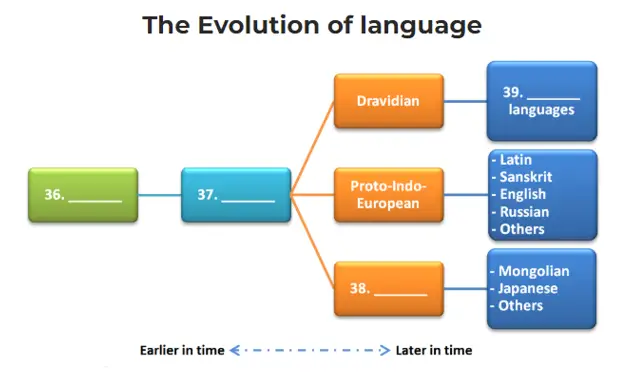In 1786, William Jones, a British judge stationed in India, made what must be ranked as one of the most amazing discoveries of all time, yet it is little known outside of linguistic circles. Jones was studying Sanskrit, a long dead Indian language only used in classic or liturgical texts. Upon examining many of the words, he was struck by their similarity to the two most ancient languages known at that time: Greek and Latin. He would later write that Sanskrit has ‘a stronger affinity’ with these other languages ‘than could possibly have been produced by accident’.
Jones drew the conclusion that Greek and Latin, and even the Germanic languages (including English), were all related to Sanskrit, and thus, logically, all of them must necessarily have evolved from a single earlier language. Subsequent scholars were able to confirm this, adding to this linguistic family all of the Romance languages (French, Spanish, and others), Slavic languages (Russian, Czech, and many others), and Indo-lranian (Persian, Afghan, and many others). There are, in fact, hundreds of languages and dialects all over Europe, Iran, and South Asia, which can now trace their ancestry to an original Indo-European language, now called Proto-Indo-European, or PIE for short.
According to linguistic theory, proto-languages are usually spoken over relatively limited geographical areas, over a short time span, and by a tightly-knit community. The implication is simple, but also stunning that some single ancient tribe which spoke this mother of languages eventually took over most of the middle and western Eurasian landmass, spreading their language with them. This subsequently evolved into many others over the course of time, creating a language family which now has the greatest number of speakers in the world. The big question concerns who these Proto-Indo-Europeans were, and where their ancestral homeland lay.
Archaeologists have examined many sites of European prehistory, occasionally identifying these as the homeland of the PIE population. This is often done with nationalistic overtones, raising the anger of others in this field, and there still remains controversy over each claim. It is linguistic evidence which provides, perhaps, more definite clues. The similarities in vocabulary between all PIE’s daughter languages have allowed linguists to deduce a probable grammar and fairly extensive vocabulary. It is irresistible not to read into this a tentative lifestyle and location, with the quaint proviso that it remains ‘at best, highly speculative’.
Looking at just one example, there are PIE words for the temperate trees of the Northern Hemisphere, but not tropical or Mediterranean varieties. This indicates a northern European location, with a cold climate. And so, with such detailed linguistic analysis, the most widely accepted theory places the PIE origin in the Caspian Steppe – a vast region of temperate grass and shrub-land north of the Black Sea, across present-day Ukraine, Southern Russia, and Kazakhstan. Their language was spoken around 4000 BC (plus or minus a millennium, since exact dates are impossible at such an early stage in European pre-history).
What then enabled this single tribe to advance outwards and take over Eurasia? Some geneticists have suggested that it was the domestication of the horse, perhaps giving that tribe a thitherto unheard-of military superiority (as would the Huns and the Mongols possess many thousands of years later). Some of them have also suggested that the discovery of farming was the impetus of this tribe’s advance, as with a stable and steady food supply at hand, their numbers could increase at the expense of the other fragmented hunter-gathering tribes roaming the wilds of Eurasia. Perhaps then, PIE simply moved alongside the outward wave of the implementation of agriculture, together with a rapidly expanding and interbreeding population.
But even PIE must have evolved from some earlier language, and audacious linguists are digging deeper into the past. PIE gave birth to a large family of languages, but there exists other families, such as Afro-Asiatic (which includes Arabic), Dravidian (comprising the many languages of Southern India), and Altaic (which includes Mongolian and Japanese). It has been proposed that these themselves may all belong to a ‘macro-family’, sometimes called Proto-Nostratic. Most linguists maintain that, although it is theoretically possible that such an original language existed, it is next to impossible to prove, since resemblances among languages can also be due to chance, and thus they remain skeptical over such a claim.
Still, the implications are mind-boggling that perhaps almost every single language on Earth can ultimately be traced back to a single source possessed by a small group of individuals. This language is sometimes called Proto-Human, the mother of all languages. One interesting theory posited by geologists is that a huge catastrophe occurred in the not-so-distant past some 70,000 years ago, linked to the volcanic eruption of Mount Toba in Indonesia. This reduced the world population to a small band of survivors, and theirs is the Proto-Human from which all languages subsequently evolved. If this is true, it is intriguing to think that had that catastrophe not occurred, we would all be speaking totally different languages today.
Questions 27-30
Complete the sentences. Choose NO MORE THAN TWO WORDS from the passage for each answer.
William Jones’s findings are mostly known within (27)……………………
A community which speaks a proto-language is (28)……………………
Proto-Indo-Europeans might have come from the (29)………………
Mount Toba was the site of a (30)…………………..
Questions 31-35
Write the correct letter, A-E. NB You can use an answer one time only.
A Archaeologists
B Geneticists
C Geologists
D Linguists
E Scholars
Which people
31. believe that reliable nutrition may be the answer?
32. have categorised very many languages?
33. often face anger and controversy?
34. are skeptical about some issues?
35. have speculated about a disaster?
Questions 36-39
Complete the flow chart. Choose NO MORE THAN TWO WORDS from the passage for each answer.

Question 40
Choose the correct letter, A, B, C, or D.
40. The author thinks the subject is
A complicated.
B controversial.
C interesting.
D fascinating.
